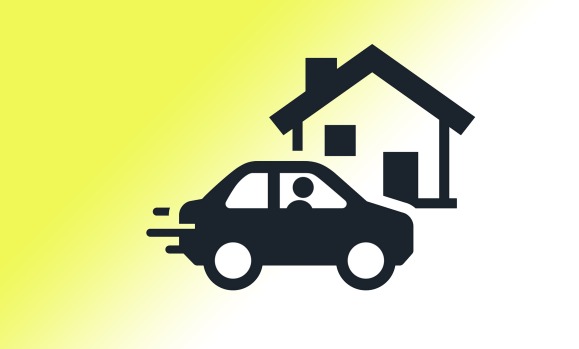
Is Speeding a Hazard in Your Homeowners Association?
Speeding is a major issue in many community associations. In addition to being a nuisance, it is clearly a hazard to people, pets, and property. Speeding is a particular problem in homeowner associations. Unfortunately, there is no “one size fits all” solution to slowing down vehicles. Associations must be proactive and creative in their approaches to combating speeding.
Reducing Speeders on Private Roads
The first analysis is to determine whether the roads in the community are public or private. If the roads are public, they fall under the jurisdiction of local law enforcement. If the roads are private, they are association common areas and subject to the association’s control. The majority of homeowner association governing documents grant the Board of Directors (Board) authority to enact reasonable rules and regulations over common areas. If the documents allow the creation of such rules, the Board is permitted to enact speed limits on the association’s private roads. Additionally, if the association’s Declaration contains a restriction prohibiting “nuisance behavior,” this can be used in conjunction Board enacted rules to prohibit speeding.
While rules put the community on notice as to what speeds will be tolerated, the association must also develop methods to prove a vehicle was violating the speed limit. Although owners’ due process rights are not necessarily as high as in a formal judicial or law enforcement proceeding, the methods utilized to catch speeders must be reasonable and reliable to be upheld. Generally, radar guns and speed detection signs would be sufficiently reliable to cite an owner. Some devices photograph the speeding vehicle. The association will also need to require owners to register their vehicles to match the car with the speeding member of the community.
Assuming the proper rules limiting speeding are enacted, and reliable methods are developed to determine if a vehicle was speeding, the association then must enforce the restrictions. There are various methods of enforcement available, the first of which is fining. If the proper statutory requirements are met, fining an owner can be a very effective method of enforcement and is akin to the association issuing a traffic ticket. Additionally, if the governing documents grant authority, a fine of $1,000.00 or more can result in a lien on the owner’s property. A less aggressive approach is to issue a statutory demand for mediation and attempt to resolve the issue before litigation is necessary.
Taken together, enforcing speeding restrictions is no easy task. Between enacting the rules and regulations, installation of devices to monitor speed, and the steps required to prosecute a speeder, the process is time consuming and can be frustrating for a Board or management company. Additionally, fines and demands may be of little use over speeding non-members or guests. Although the association may go after an owner if their guests are speeding, the association will have little power over vendors and third parties unless they can be accurately attributed to an owner.
A less intensive of method of reducing speeding in the community is to consider passive speed limitation devices. Speed bumps, flashing signs, raised medians, and roundabouts can all be a relatively low-cost, effective method of reducing speeding. However, installation of such devices should be “reasonable” and done in the least intrusive way to obtain results. Installation of these devices is likely to be construed as a material alteration to the common elements. Therefore, the association must take care that it is properly approved.
Municipal Traffic Control
Section 316.006(2)(b), Florida Statutes, allows an association to enter into an agreement with the local municipality to enforce traffic laws within private communities. Theoretically, this would permit an officer to issue tickets to speeders on the association’s private roads. However, implementing this type of enforcement requires also requires a great deal of coordination and compliance with local regulations.
Traffic control agreements could require the association pay processing fees, obtain traffic surveys and additional insurance, execute indemnification agreements, reimburse police personnel costs, and comply with Department of Transportation signage throughout the community. If the Board can adhere to these conditions, entering into the agreement merely requires a majority Board vote.
If your association is experiencing issues related to speeding vehicles, Tankel Law Group is available to offer cost-effective guidance. Please do not hesitate to contact our office.
CATEGORIES
RECENT POSTS
ARCHIVES
- Mar 2023 (1)
- Apr 2022 (1)
- Feb 2022 (1)
- Oct 2021 (1)
- Sep 2021 (1)
- Jul 2021 (1)
- May 2021 (1)
- Mar 2021 (1)
- Feb 2021 (1)
- Jan 2021 (1)
- Dec 2020 (1)
- Oct 2020 (1)
- Sep 2020 (1)
- Jul 2020 (1)
- Mar 2020 (3)
- Feb 2020 (1)
- Jan 2020 (1)
- Dec 2019 (1)
- Oct 2019 (1)
- Sep 2019 (1)
- Aug 2019 (3)
- Jul 2019 (1)
- Apr 2019 (1)
- Feb 2019 (2)
- Jan 2019 (1)
- Dec 2018 (1)
- Oct 2018 (2)
- Aug 2018 (2)
- Mar 2018 (1)
